
Browse an alphabetical list of photographs. These historical images portray people, places, and events before, during, and after World War II and the Holocaust.
<< Previous | Displaying results 76-100 of 134 for "Photo" | Next >>
Members of a resistance organization in the camp meet with American soldiers in front of the entrance to the Buchenwald concentration camp. Buchenwald, Germany, after April 11, 1945. In early April 1945, as US forces approached the camp, the Germans began to evacuate some 28,000 prisoners from the main camp and an additional several thousand prisoners from the subcamps of Buchenwald. About a third of these prisoners died from exhaustion en route or shortly after arrival, or were shot by the SS. The…
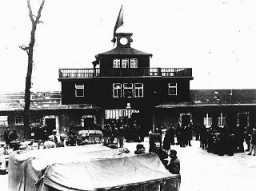
Shortly before liberation by Allied forces, French resistance fighters staged uprisings across occupied France. Here, fighters gather arms during the Marseille uprising. Marseille, France, August 1944.
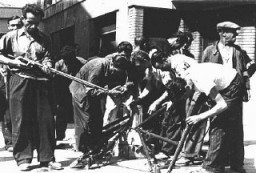
Adolf Hitler, Julius Streicher (foreground, right), and Hermann Göring (left of Hitler) retrace the steps of the 1923 Beer Hall Putsch (coup). Munich, Germany, November 9, 1934.
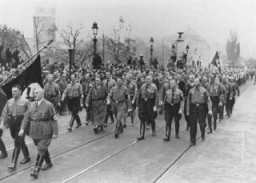
Belgian officials at the gangplank of the St. Louis after the ship was forced to return to Europe from Cuba. Belgium granted entry to some of the passengers. Antwerp, Belgium, June 1939.
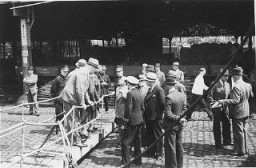
Belgium agreed to accept some of the Jewish refugee passengers of the St. Louis after Cuba and the US denied them entry. Here, Belgian police escort some of the passengers after their arrival in Antwerp. Belgium, June 17, 1939.
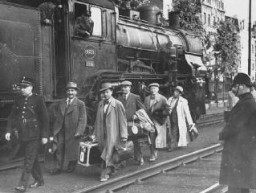
The St. Louis, carrying German Jewish refugees denied entry into Cuba and the United States, arrives in Antwerp. Belgian police guard the gangway to prevent passengers' relatives from boarding the ship. Belgium, June 17, 1939.
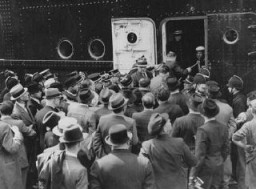
September 1, 1944, Richard Baer ceremonially accepts a copy of the construction plans from the Chief of the Central Construction Directorate of the Waffen SS, SS-Sturmbannführer Karl Bischoff, celebrating the opening of an SS military hospital (SS-Lazarette). Baer was the last commandant of the Auschwitz camp. From Karl Höcker's photograph album, which includes both documentation of official visits and ceremonies at Auschwitz as well as more personal photographs depicting the many social…
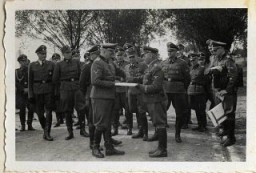
Richard Baer, Dr. Josef Mengele, and Rudolf Höss. From Karl Höcker's photograph album, which includes both documentation of official visits and ceremonies at Auschwitz as well as more personal photographs depicting the many social activities that he and other members of the Auschwitz camp staff enjoyed. These rare images show Nazis singing, hunting, and even trimming a Christmas tree. They provide a chilling contrast to the photographs of thousands of Hungarian Jews deported to Auschwitz at the same…
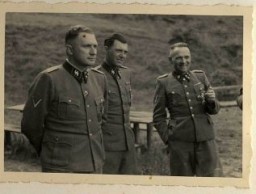
Richard Baer and Karl Höcker look over a document with SS-Standartenführer Dr. Enno Lolling, the director of the Office for Sanitation and Hygiene in the Inspectorate of Concentration Camps. From left to right: Lolling, Baer, Höcker. From Karl Höcker's photograph album, which includes both documentation of official visits and ceremonies at Auschwitz as well as more personal photographs depicting the many social activities that he and other members of the Auschwitz camp staff enjoyed.…
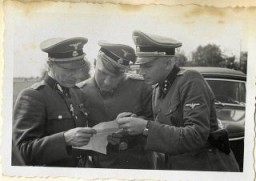
British Jewish leader Sidney Silverman forwarded to American Jewish leader Stephen Wise this copy of a cable originating from Gerhart Riegner, World Jewish Congress representative in Geneva. Riegner had sent through their respective governments two cables warning Silverman and Wise of Nazi plans to exterminate European Jewry. The US State Department delayed delivery of the cable from Riegner to Wise, who initially received this version. United States, August 29, 1942.
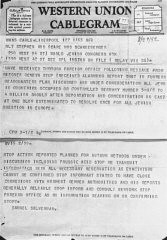
Rita Rosani, a former school teacher who joined the Italian armed resistance immediately upon the German occupation of Italy. She was killed near Verona on September 17, 1944, when her unit was surrounded. Trieste, Italy, 1940.

View of the road leading to the Deggendorf displaced persons camp. Deggendorf, Germany, 1945-46.
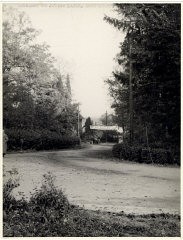
US Chief Prosecuter Robert H. Jackson, pictured at the time of the International Military Tribunal (1945–1946). In 1941, Jackson had been appointed to the US Supreme Court. Justice Jackson took a leave of absence from the court in 1945 to serve as chief US war crimes prosecutor at the Nuremberg trials of former German leaders. He returned to the Supreme Court in 1946.
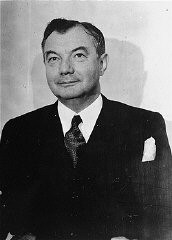
US prosecutor Robert Kempner during the Ministries Trial, case #11 of the Subsequent Nuremberg Proceedings.

American prosecutor Robert Kempner, at the Nuremberg commission hearings investigating indicted Nazi organizations. July 1946.
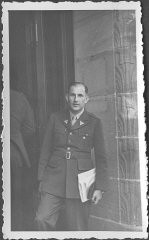
US prosecutor Robert Kempner shows a document to German Field Marshal Erich von Manstein at the International Military Tribunal commission hearings investigating indicted Nazi organizations. Also pictured is the interpreter, a Mrs. Lowenstein. July 1946.
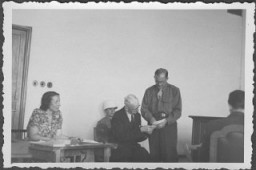
Rohingya walk into a section of the Balukhali refugee camp in Bangladesh, September 2017.
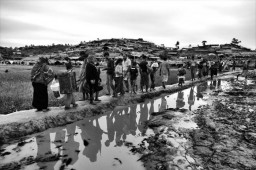
Roland Freisler (center), president of the Volk Court (People's Court), gives the Nazi salute at the trial of conspirators in the July 1944 plot to kill Hitler. Under Freisler's leadership, the court condemned thousands of Germans to death. Berlin, Germany, 1944.
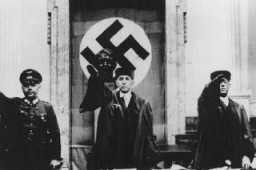
Prisoners during a roll call at the Buchenwald concentration camp. Their uniforms bear classifying triangular badges and identification numbers. Buchenwald, Germany, 1938–41.
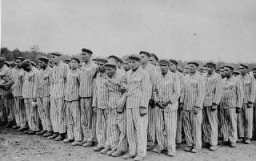
Roll call for newly arrived prisoners, mostly Jews arrested during Kristallnacht (the "Night of Broken Glass" pogrom), at the Buchenwald concentration camp. Buchenwald, Germany, 1938.
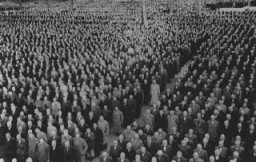
Scene from a Romani (Gypsy) camp: Roma (Gypsies) in front of their tents. Romania, 1936–40. (Bundesarchiv inventory number 146-2001-16-20A.)
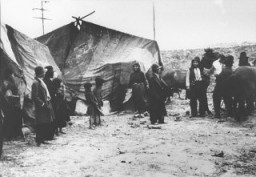
Roma (Gypsies) near Uzhgorod in 1938, including the group's chief (standing second from left).
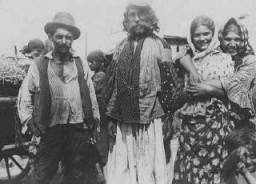
Two Roma (Gypsies) photographed near Craiova. Romania, probably early 1930s.
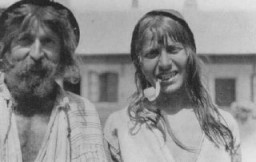
Romani (Gypsy) children play outside at the Jargeau internment camp. The camp was established in response to a German order in October 1940 calling for the arrest and confinement in camps of all Frenchmen or foreigners in the Loiret region who did not have a permanent residence. Jargeau, France, 1941–45. Conditions in the camp were extremely poor and the lack of sanitation facilities led to the periodic outbreak of epidemics.
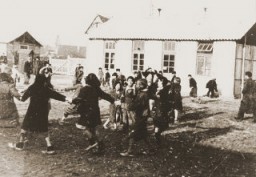
Romani (Gypsy) family near Craiova. Romania, probably 1930s.
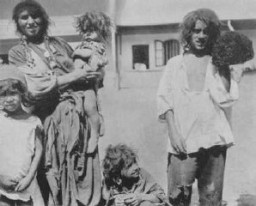
We would like to thank Crown Family Philanthropies, Abe and Ida Cooper Foundation, the Claims Conference, EVZ, and BMF for supporting the ongoing work to create content and resources for the Holocaust Encyclopedia. View the list of donor acknowledgement.